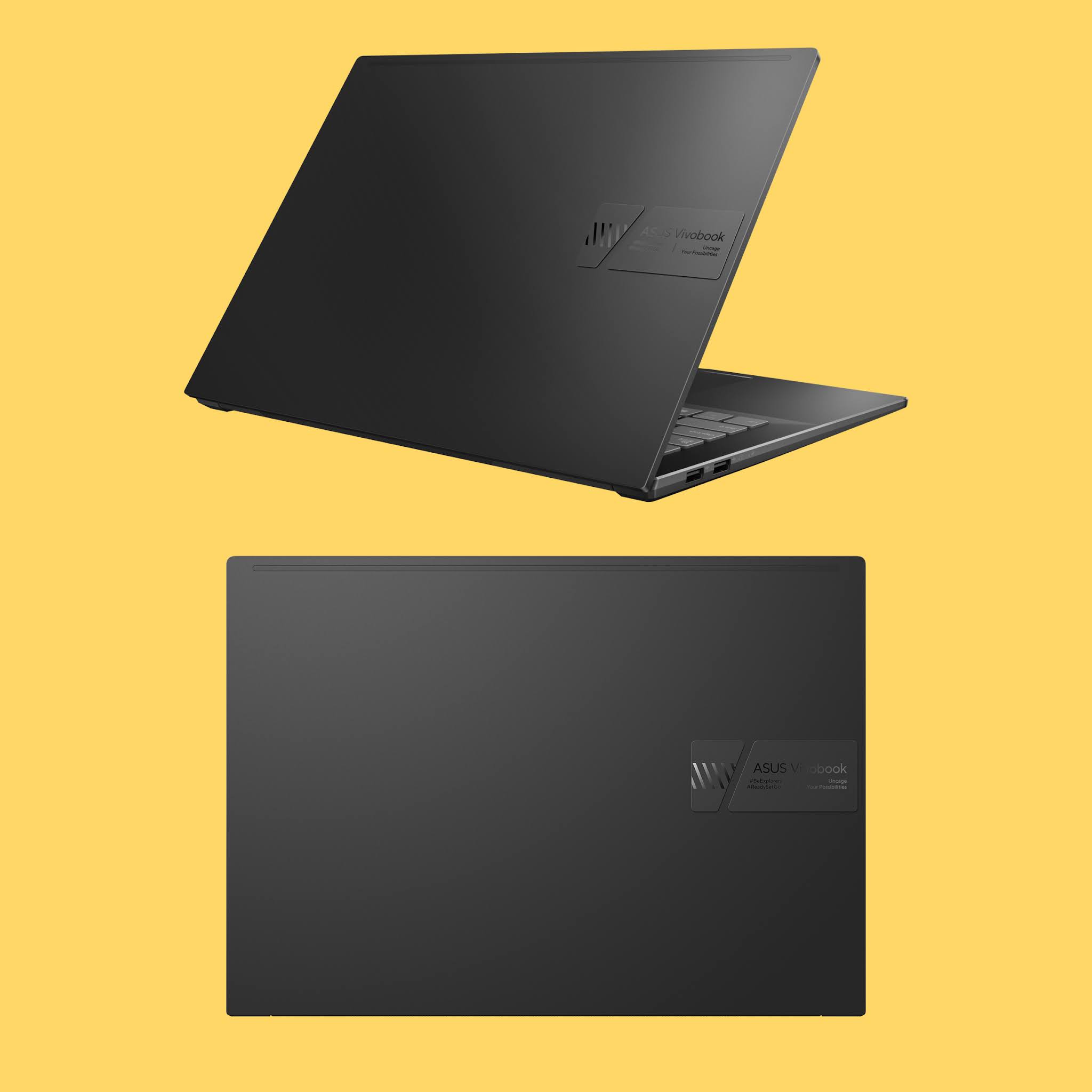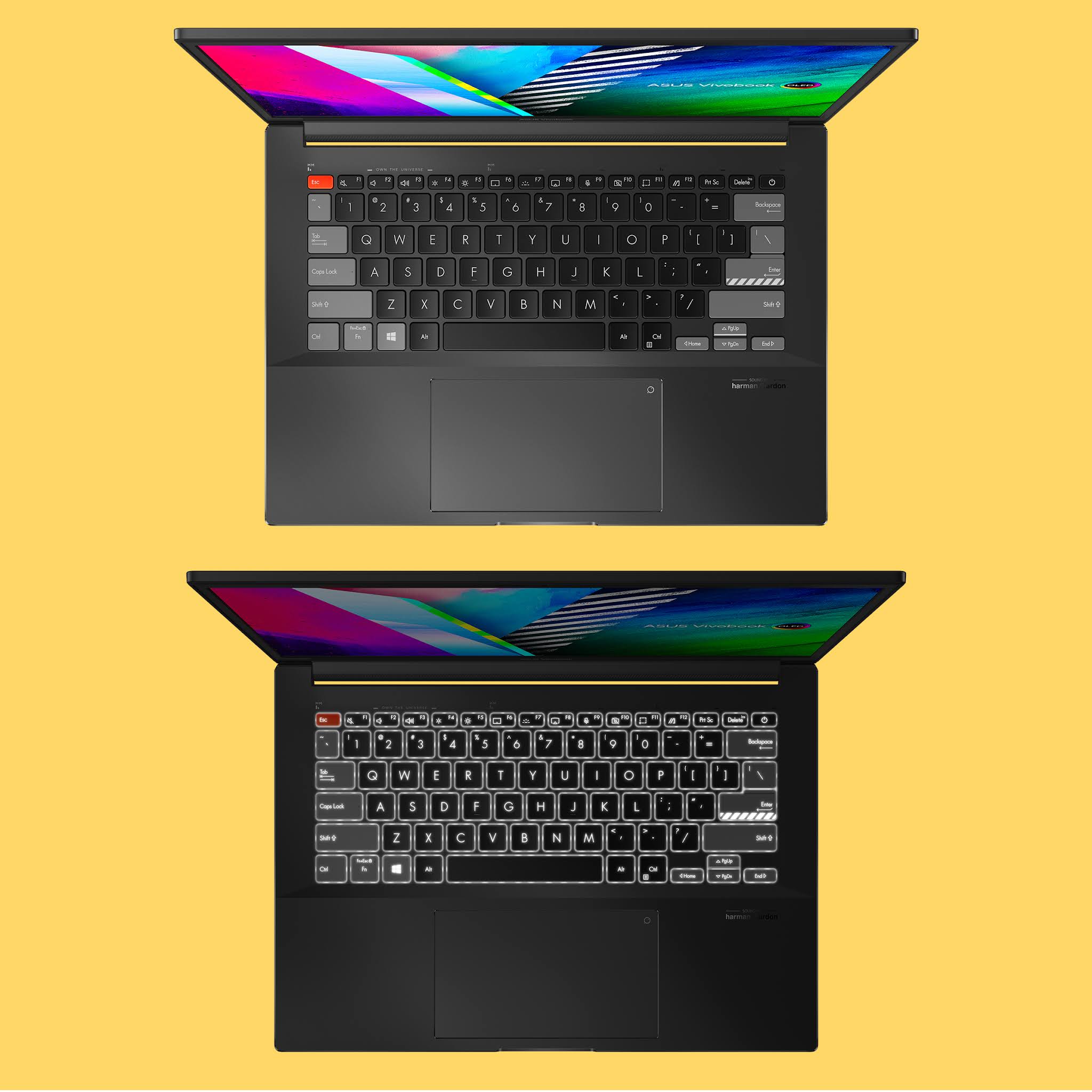The new Asus Vivobook pro 14x OLED is a bit much, but a lot is happening here with the rugged hardware package, we also have this cool Asus dial built into the touchpad along with this unique kind of creator that finds gamer vibe for life.
A webcam privacy solid design battery filters out a pretty decent range of ports and a bunch of other stuff, but the best part is this 16 by 10 90 hertz OLED screen that doesn't get much better than that. Samsung Company makes this screen that we have in every Vivo book, in which there are about a billion different SKUs.
What is Vivobook?
Asus makes a ton of laptops, we have the zen book range a little more sophisticated, and then we have these professional art studio books at the very top for creators and we have the rog and the Zephyrus type on the game side. Vivobooks are generally a little more affordable, but with Vivobook pro and then the x variants of the 14-inch and 16-inch models, let's look at the 14x now!
to complicate matters further, there are Intel and AMD versions of each, namely a Ryzen 5000 series or an 11th generation Intel series, but all new Vivobooks come with these OLED screens. So the most affordable Vivobook, the pro 14 starts at around 700 pounds, the 14x highest spec is around 1300, while the top of the line 16x pro starts around 1400.
Screens and Display
let's talk about the screen not just because Samsung is sponsoring it, but because it's a real deterrent and going back to being a regular LCD laptop looks a little faded and lifeless after you've been spoiled by an OLED.
so there are some screen options with a 90-hertz 2.8k resolution or a full-fat 4k OLED, but with a slower 60Hz refresh rate, so it depends on what you're going to use it for, but for me, I think that 2.8k is a good balance on a 14-inch screen and although it's not quite 120, the boost up to 90 makes everything noticeably smoother and I'm also really glad they used a 16 x 10 aspect ratio, which is a bit taller than a normal laptop screen and makes everything look less constrained and square, although you get slightly thicker black bars when watching videos or movies.
The brightness in hdr mode is measured around 530 nits, which is pretty decent and also, of course, because it allows the pixels to completely turn off, which means the blacks are black. so the contrast and dynamic range in movies and games are amazing, the non-hdr content was close to 400 nits of brightness, which is still enough to see in all but the strongest sunlight, so this is very targeted for the casual creator type to presume and if you are a photo or video editor or graphic designer or something you will appreciate an accurate color screen that is very important but the good news is that they are extremely accurate.
Samsung OLED Screen Blue Light Filter
that's not all because another less obvious benefit of these Samsung OLED panels is that they emit much less harmful blue light than normal screens, which can affect your health and particularly your sleep rhythms.
Designs
let's talk about this design and I want to give Asus credit for using recycled materials in the lid and I like this embossed area of the logo. but I would be interested in seeing a fully recycled laptop chassis at some point.
inside is this two-tone gray-white layout and the dashed pattern illuminated on the Enter key. now apart from the lid, the rest of the body is aluminum and looks solid with just a little flexibility around the keys, tilting the scale to 1.45 kg. it's not the lightest 14-inch laptop on the market, but given its specs and performance, it's quite portable. also, the regular professional non-x Vivobooks get a slightly more basic interior but still look quite elegant.
Keyboard and touchpad
The keyboard is lovely to type on and there's plenty of travel and feedback. we also get a fingerprint reader built into the power button and also this glass trackpad is much bigger than previous vivobooks and it's nice and responsive.
Asus Dial Pad (New Feature)
now, these laptops are very famous for adding extra features to the touchpad, we had a number pad, we had a full-screen keyboard, but now with a little swipe from the corner we have the Asus dial and it's a virtual version of this physical Asus dial-pad. which is functionally the same, but it's not a physical dial pad, so like I say you just swipe from the top right corner and give a little touch and there's a wheel on the screen with customizable controls with Windows volume and brightness by default.
but it comes alive when you use it with a compatible app that's now limited to adobe lightroom, classic photoshop, premiere pro, and aftereffects, that's it.
but if you open the pro art control hub which is pre-installed, you can choose which controls you want to assign, scroll a timeline, adjust the exposure, you can configure it however you like. the problem is that, unlike Asus' physical style in professional art, it's not so easy to use. you have to activate it first when you want to use it. and I also found that I had to keep an eye on my finger or else I would be going too far in or out of the circle for the benefit of the physical dial on the studio speakers that you can feel all around.
so it's a cool add-on and you don't need to use it, of course, but it's not something I'd want to use in the long term with this.
Ports and wifi
now, in terms of ports, it's a little confusing. We have a full-size HDMI 2 and a micro-SD card slot, although a full size would have been more useful along with a headphone jack and a USB 3.1 type a and USB c port. on the other hand, we have two USB 2 ports, the good old 21-year-old USB 2, which is fine for a mouse, and maybe older peripherals, but USB 3 should be standard now across the board. we do get wi-fi 6.
Performance of this Vivobook Pro 14X
Although it's not ridiculously expensive, we have a very good design, the screen is top-notch and as for performance, how fast is that good, we'll only talk about the specs we have here with the ryzen 7 5800h 3050ti graphics card with 16GB RAM and one terabyte SSD. therefore it is a solid spec, although the 3050 ti is a lower 35 watts max. Still, it can boost up to 50 watts dynamically. but this is meant for photo and video editing and maybe moderate 3d graphics work. The good thing about these so-called creator laptops is that, with these dedicated GPUs, they can become decent gaming machines, especially with this new 90Hz refresh rate. but even so, we were still enjoying the higher refresh rate.
Speakers and Sound quality
The stereo speakers are lowered and popping out slightly, which means your desktop or laptop shapes the sound a little.
speech and music are clear and quite loud, but as most laptops are missing some bass
Battery Performance
finally, battery life and we have a 63 watt-hour cell here. not as significantly as resolution or brightness, but particularly with dark mode enabled or when you have darker backgrounds on the screen as the OLED pixels are auto-emitting so they can individually turn off when not needed, you can see slightly longer batteries. although I haven't tested the 16x larger in the reviews, I saw that it looks like the battery is much better.
in fact, in analyzing digital trends, they claim it lasted longer than the LG gram 16, although the vivobook has much faster hardware.
Final Thought
So the big question: should you buy one of these new vivobooks? well yes, I think so! I think it's a very easy recommendation. I'm tempted to say that standard non-professional vivobooks like the vivobook 14, which starts at 700 pounds, might be a better value option, as you still have 3050, the latest CPUs, and also an OLED screen, but if you want that extra performance, the 14x here is worth considering.
Samsung's OLED screen is incredibly good. a touchscreen would have been nice and maybe glass frames that line up with the screen instead of those slightly protruding plastics too this USB 2s should be USB 3s and a full-sized SD card reader would have been much more helpful. but other than that there's not much to complain about.
What do you think of this OLED screen? Let me know in the comments below!
Source: @Asus and @thetechchap















